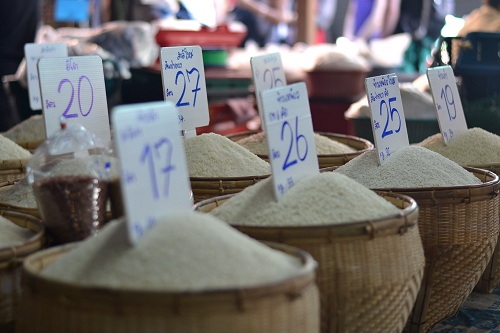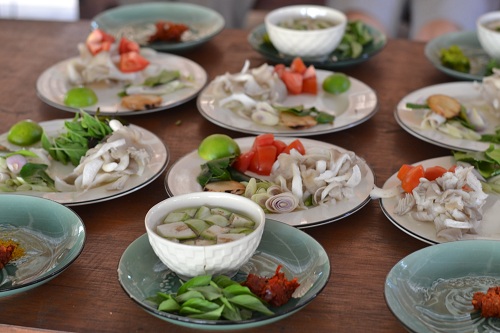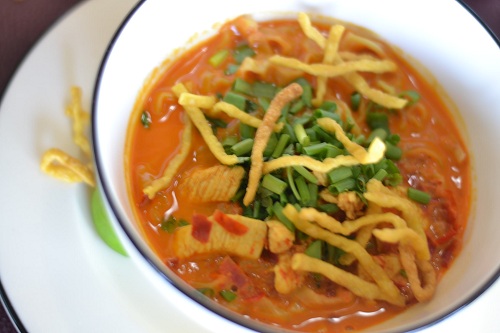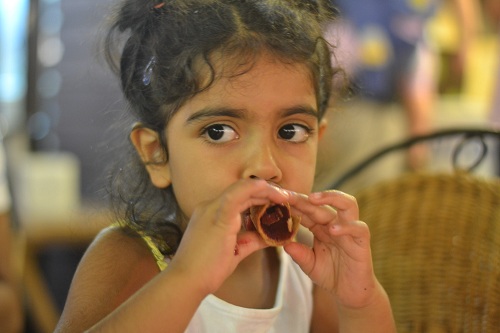Elephants are revered in Thai culture as symbols of royal power and spiritual features. They have also been exploited and neglected in many ways. When Thailand banned logging in 1989, thousands of logging elephants found themselves out of jobs and unable to return to the wild. Their upkeep proved too expensive and many were abandoned or neglected. Some ended up begging with handlers on the streets of cities such as Bangkok and Chiang Mai. Elephants faced abuse at the hands of inexperienced handlers who saw them only as a sources of income. Many elephants lucky enough to remain wild were poached or killed for infringing on precious crop land.
At the turn of the century there were an estimated 100,000 elephants in Thailand. Today that number is about 3,000. We spent the day with 36 of them at one of the many elephant sanctuaries in Chiang Mai. We chose Elephant Nature Park because it seemed intent to offer elephants the most natural habitat possible, and stayed away from forced shows such as elephant painting and elephant soccer.
Our day was spent feeding, bathing and generally observing the elephants.


The most lasting impacts, however, were what the elephants taught us about our own nature.
Friendship. At the park, we were lucky to meet an Australian gentleman who provided the funds to buy elephant Mae Tee’s freedom from a logging camp. He told us that Mae Tee had been addicted to methamphetamines, which were given to make her more productive. The drugs caused calcification in her joints and she is unable to sit or lie down. While many elephants sleep standing up, the inability to lie down for years has ulcerated her feet. Another elephant in the park, Mae Kham Geao, befriended Mae Tee and the two of them are now inseparable. Mae Tee has to stay by the park clinic to care for her ulcerated feet. Mae Kham Geao did not leave her side for the entire day we were there. We were told that since befriending Mae Tee, Mae Kham Geao hasn’t sat or laid down. That was over two years ago. I wish I could honestly say that I would stand in solidarity with a friend like that.

Family. We observed a family of seven elephants – two babies and five grown females. Wherever they went, their bodies moved together as if in one giant tangled knot of limbs, trunks and tails. During feeding time, a fifteen month old baby slid on mud and let out a long trumpeting sound. Within seconds, the other six members of the family sprang into a tight circle of protection around the toddler. Most of the members of this family are not biologically related. Yet, in the park, they have formed the bond of a loyal family. Watching this group rekindled our appreciation for family, whether the one we are born with or the ones we form along the way.

Endurance. Jokia is a 40ish year old elephant who used to work as a logging elephant. After the logging ban, she was passed onto abusive owners. Handlers tried to beat her into submission. She lost a pregnancy. In the end, abuse caused her to lose sight in both eyes. At the park, her elephant friend, Mae Perm, guides Jokia around. Despite her past, Jokia is leading as close to a normal elephant life as possible.

When we left New York City, I put my wedding and engagement rings in the safe deposit box and have been wearing the ring Sandeep gave me a year after we started dating. It’s an elephant hair supported by a thin metal band. In Kerala, India, elephant hairs are considered protective. Given the ring’s low monetary value, it’s been serving as my wedding ring on this trip. Until today, when I was up close and personal with thick elephant hair, I was convinced that the black was plastic.

Working elephants were ubiquitous in Sandeep’s youth and I’ve seen many, so our reason for visiting them today was nothing more profound than having another way to explore the area around Chiang Mai. We did not expect to walk away with such a deep sense of connection and appreciation for these creatures. Elephants predate humans by millions of years. Their evolutionary line goes back to when dinosaurs roamed our earth. They deserve our respect. Apart from what they taught us today, they made me place a lot more value on my new wedding ring.








































